7. Inception – The hallway fight
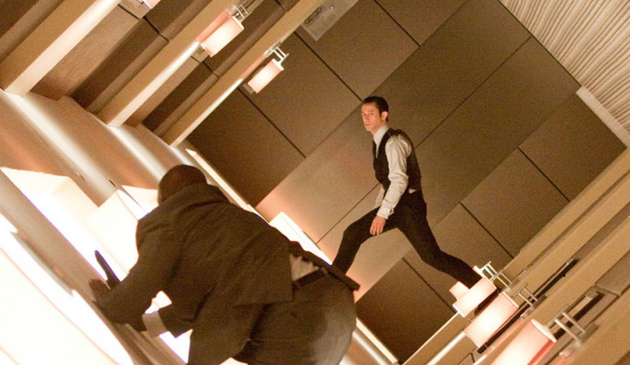
Let’s take the Fred Astaire ceiling dance and push it to the absolute NEXT LEVEL. The hallway fight scene in Inception is, quite simply, the best in camera effects sequence of the twenty-first century.
Director Christopher Nolan achieved the effect in the same manner in which Stanley Dolan, and later Wes Craven achieved it. The reason Nolan’s version ranks the highest is simply because he perfected it. His is an action sequence, a fight scene, an aerial ballet, and it takes place in a hotel hallway clogged with furniture. The sense of movement is breath taking.
Inception is filled with great in camera effects sequences. In fact, all of Nolan films tend to achieve as much as possible in front of the camera and not on the computer. Hopefully, more filmmakers will follow his lead and revert back to the old ways.
6. The Thing – “You gotta be fucking kidding.”
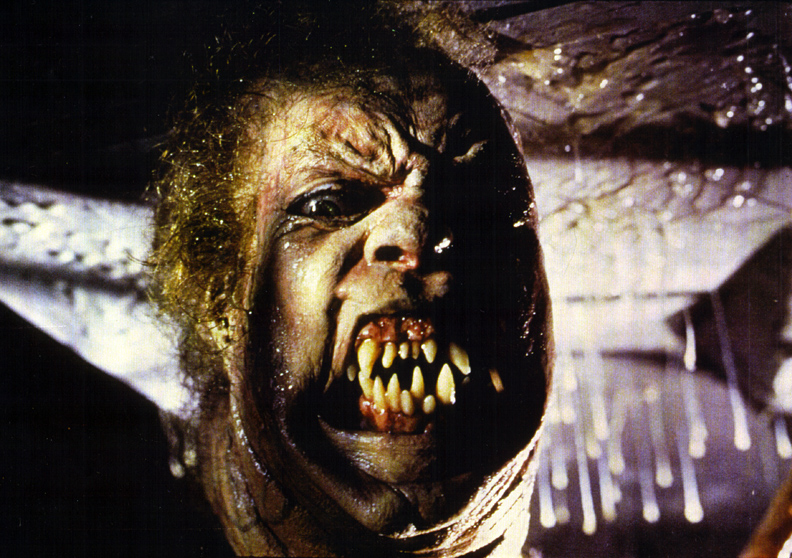
When it comes to monster films and puppeteering, there is no crazier sequence then the “you gotta be fucking kidding” moment from John Carpenter’s The Thing.
To keep it as simple as possible, the story is of a shapeshifting alien that infects a group of scientists in Antarctica. One by one it infects the men and takes their physical form. After another person if found unconscious, the surviving men rush to try and save him.
The doctor grabs a defibrillator and attempts to resuscitate him. Instead, the victims abdomen becomes a giant mouth with razor sharp teeth that bite off the poor doctors arms. Then, the alien jumps out in the form of a giant spider with a long, hideous neck and the face of it’s last victim. Basically, it has not had the chance to take his victim’s physical form.
The frightened onlookers burn the creature with a flame thrower. As the body is being burned, The alien escapes by ripping the head of the victims corpse. The head tumbles to the ground and sprouts long, spider-like legs and hides beneath a desk. As the men are distracted by putting out the fire, the alien takes its chance to escape. That’s when one of the men turns around, sees it, and utters the famous line before torching it.
Rob Bottin’s work in this scene is both the epitome of puppeteering excess, and at the same time shows imagination running completely wild.
5. The Bride of Frankenstein – Dr. Pretorius’s little people

It may be one of the weirdest scenes in all of the great Universal monster movies, but the little people in Dr. Pretorius’s bottles provide a truly dazzling special effect.
Dr. Pretorius, Henry Frankenstein’s mentor and former teacher, also experimented with the creation of life, only his turned out to be miniatures. As he tells Dr. Frankenstein, “My experiments did not turn out quite like yours, but science, like love, has it’s little surprises.”
He then proceeds to introduce Henry to a variety of miniature people: a queen, a king whom is madly in love with her and thus must be segregated, a mermaid, an archbishop, and even the devil himself. The effect is both goofy and haunting.
This scene shows how double exposure techniques had grown in the 1930’s. It is definitely one of the most creative sequences on our list, and certainly on the most bizarre.
4. Sunrise – “Come To The City”

Of all the great things about Sunrise, the special effects are its crowning achievement. The film was the real apex of filmmaking for it’s time and includes many sequences that were revolutionary for their time. Perhaps the greatest of them all is the “Come To The City” sequence at the films beginning.
In the scene, a vamp from the city tries to convince a rural man to leave his wife and come with her to the city. She tries desperately to convince him, and even suggests that he drown his wife. The man is shocked, but she is persistent. The pleads with him, “Come to the city!” Finally, as if by magic, the lakefront on which they lay becomes a vast cityscape. They, and in turn we the viewer, are then taken on a whirlwind tour of the city, full of bumping traffic, bright lights, and swinging jazz clubs.
The scene was created using a dazzling array of double exposures, miniatures, and pricise editing. It is one of silent cinema’s greatest achievements and it still has the power to enthrall to this day.
3. An American Werewolf In London – The transformation scene
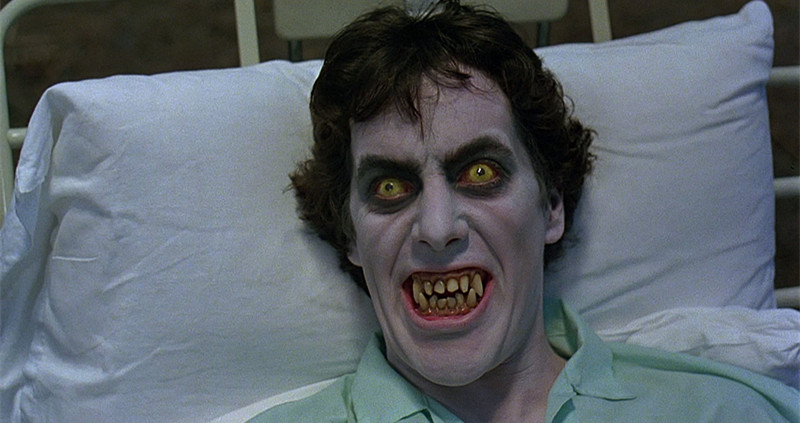
Ah, the transformation sequence. It has been a staple of horror films since the beginning. From Fredric March struggling in the mirror as he turns into Mr. Hyde, or Lon Chaney jr’s many takes of the wolf man, the transformation was a key effect in making audiences believe such outlandish tales. Of all the great transformation sequences, none is more powerful or affecting then the first transformation in John Landis’ An American Werewolf In London.
When David Kessler slowly succumbs to the fate that he has been warned about, we see every painful step. It is a masterpiece of puppeteering, make-up, and sound design. We not only see his bones extend, we hear their crunch mixed with his pitiful howls. Most affecting of all is when we watch his face slowly grow into a snout. Instead of using an appropriately timed cut away, as most films had done in the past, Rick Baker and his team devised a fake head that they could push, contort and extend to create the sequence.
Baker’s work was awarded with the first ever Academy Award for achievement in make-up effects for his work on this film. I think it can safely be said that the transformation scene was the main reason he received that award.
2. The Phantom Carriage – David’s death
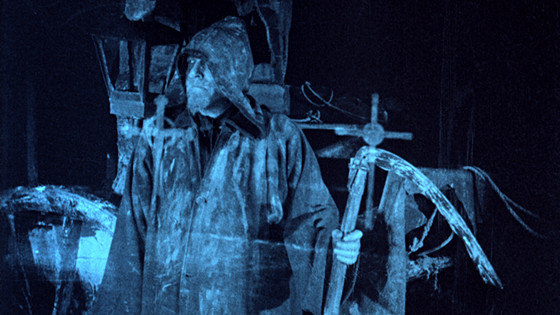
Silent cinema is full of ingenious camera play. Back when there were no rules, cameramen tried everything and created techniques that formed the foundation of modern special effects. One of the greatest innovations was the use of double exposure, or the act of feeding film that has already been exposed back through the camera to create an overlapping images. We’ve already seen a few examples of this technique on our list. Yet, no film in the history of cinema did this more beautifully or hauntingly than Victor Sjostrom in his film The Phantom Carriage.
In one of its most renowned sequences, a drunk (played by Sjostrom himself) dies on New Years Eve and his spirit rises from his dead body. Then, he is greeted by the phantom carriage and a hooded figure who informs him that he is now cursed to drive death’s carriage and collect the dead for the following year. All of this is achieved through double exposure, creating a ghostly effect that when added with the soft yellowish tinting make for a real haunting experience.
1. 2001 – The stargate sequence
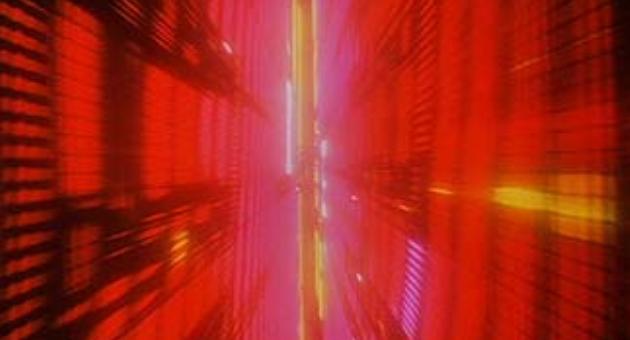
What can be said about the stargate sequence that hasn’t already been said? Quite simply, we have yet to better it. No film has even come close. Somehow, without computers, Stanley Kubrick was able to take us through a worm hole and into the deepest reaches of outer space.
Douglas Trumball’s revolutionary slit scan technique used a machine that could emit neon light in different patterns to shine upon a camera that had no shutter. In the meantime, there would be a barrier put up between the camera and the machine with a slit. In that slit, Trumball would move different pieces of artwork in order to create what he calls “streak” or “slit scan” photography. In order to give the illusion of going through a tunnel, he did this process for both the left and the right sides of the frame, with different artwork, thus creating a sense of being sucked into another dimension.
When viewed today, it looks much like screen savers used to look on old home computers. Yet, when you view it with the knowledge that it was created manually, without the help of a computer, it takes on much more weight, becoming truly astonishing. It is so mind numbing that it can have adverse reactions to those viewers who are turned off by the abstract..
So much of 2001: A Space Odyssey is grounded in real life special effects, but nothing compares to the stargate sequence. It is the greatest in camera special effects sequences of all time.
Author Bio: David Brimer is a professional musician and writer from Florida. He has toured the world with artists as diverse as Jackson Browne and Hanson, and has published a few short stories in small literary magazines. He is a self-professed cinephile who loves pure cinema.